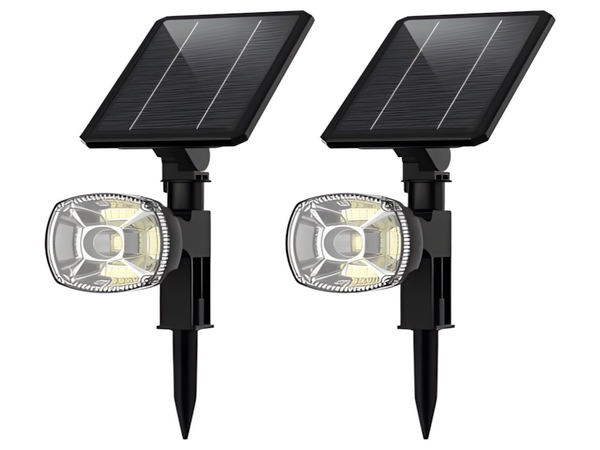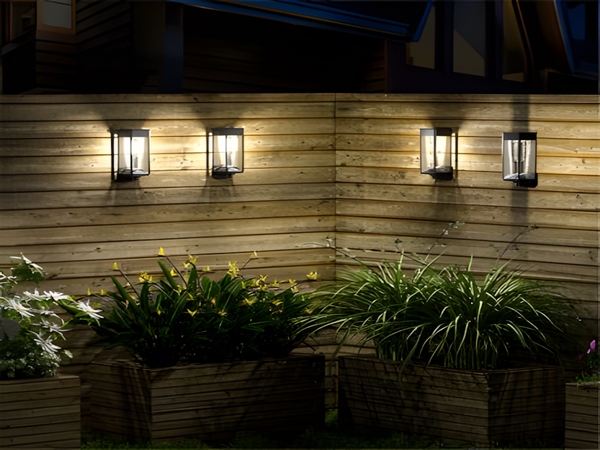
The light source of solar street lights is a renewable and environmentally friendly energy that is inexhaustible, posing no pollution or radiation to the environment. Using solar street lights in residential communities can reduce property costs and lower expenses for homeowners. So, which is better: solar street lights or traditional street lights? Here is a sharing from the editorial team of Century Sunlight Lighting:
1. Working Principle:
The working principle of solar street lights is that solar panels collect sunlight, with effective sunlight collection time being from around 10 AM to 4 PM (taking summer in northern regions as an example). This light energy is converted into electrical energy and stored in a pre-fabricated gel battery through a controller. When the sun sets and light levels drop, causing the voltage from the solar panel to fall below 5 volts, the controller automatically activates the street light for illumination.

The working principle of 220V street lights involves pre-wiring the main line of the street lights either above or below ground and connecting it to the street light lines. Then, the illumination time of the street lights can be set using a time controller to designate when they turn on and off.
2. Applicable Range:
Solar street lights are suitable for areas where electrical resources are scarce. In certain regions affected by environmental challenges and construction difficulties, solar street lights become a favorable choice. Additionally, in rural areas and isolated strips along roads, if the main line is overhead and exposed to sunlight, lightning, and other factors, it can lead to damage to the fixtures or excessive aging of wires, causing circuit interruptions. Going underground incurs high installation costs, making solar street lights the best choice in such cases. Conversely, in areas abundant in electrical resources with convenient wiring, 220V street lights are also a good option.
3. Lifespan:
Regarding lifespan, if using LED street lights of the same brand and quality, 220V street lights tend to have a slight advantage because LED street lights are already highly energy-efficient. While calculating electricity costs, solar power doesn’t require 220V voltage, meaning no electricity costs; however, the replacement of batteries every five years significantly surpasses the electricity costs incurred by 220V AC street lights (this excludes high-pressure sodium lamps).
4. Fixture Configuration:
Whether for AC 220V street lights or solar street lights, the mainstream LED light source is preferred due to its energy efficiency and long lifespan. For village streets, light poles with a height of 6 to 8 meters may be equipped with 20W to 40W LED light sources (equivalent to the brightness of 60W to 120W energy-saving lamps).

5. Disadvantages:
The disadvantages of solar street lights include: 1) Batteries must be replaced approximately every five years. 2) Continuous rainy weather can deplete the battery supply within three consecutive days, leading to no nighttime illumination. 3) Nighttime illumination times cannot be uniformly adjusted (there’s a significant difference in illumination time between winter and summer, requiring individual adjustments). Disadvantages of 220V AC street lights include: 1) No current adjustment can be made for LED light sources, resulting in full power usage throughout the entire illumination period; this wastes energy during late night when less brightness is necessary. 2) Issues with the main power cable can be challenging to resolve (whether underground or overhead); if a short circuit occurs, troubleshooting requires checking one by one. Minor issues may be repairable, but major problems should entail replacing the entire cable. 3) The metal pole bodies of the lights are highly conductive, which can pose life-threatening risks if electrocution occurs during rainy conditions.
The above insights regarding which is better between solar street lights and traditional street lights are shared here. Additionally, as solar street lights operate on low voltage, they provide stable usage without concerns over electrocution or fire hazards, and wiring design issues are negligible as long as installation is conducted as specified.



